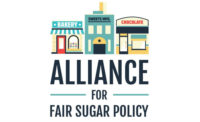The inability of the Congressional Super Committee to reach a deficit-reduction deal had a silver lining for those who keep a careful eye on sugar prices.
Nicholas A. Pyle, with the Independent Bakers Association (IBA), says the efforts to indefinitely extend sugar program provisions from the last Farm Bill has also died in the process.
Those in the industry have long called for reform to the sugar program provision, pointing out that current U.S. sugar policy has contributed to the loss of an estimated 112,000 jobs in American sugar-using industries between 1997 and 2009 alone, according to U.S. Department of Commerce data.
Pyle says critics of using the super committee process to write farm policy saw it as an end run by the agribusiness lobby.
Before the committee officially died, Larry Graham, chairman of the coalition for Sugar Reform and president of the National Confectioners Association (NCA), voiced his objection to the possibility of extending the sugar policy, saying it would harm American consumers and businesses for generations to come.
“The sugar program should be thoroughly reformed to lower consumer costs and and provide relief for American small business who are being crushed by the current, overly intrusive government program,” Graham said. “Sugar policy must be left for future legislation where it can receive the fair and democratic debate it deserves.”
The super committee’s inability to get a deal means that that the House and Senate agriculture committees will likely start over on the bill in 2012. Existing farm programs start expiring at the end of September 2012.
The failure of the super committee to reach a deal is supposed to trigger about $1 trillion in automatic reductions to the deficit over a nine-year period, starting in 2013, the IBA says. An estimated $15 billion of those cuts would fall on agriculture spending, with most of coming in crop subsidies. Food stamps and a major land-idling program, the Conservation Reserve Program, are exempt from the automatic cuts.
The agriculture committees proposed to cut more than that - $23 billion, with $15 billion of that coming from crop subsidies and the rest from conservation and nutrition programs.
The conventional legislative process for writing a new farm would include public meetings and votes in committee and on the House and Senate floor. But that's a long, difficult process for a major bill to navigate even in a non-election year, Pyle says.
Those looking for reform to the U.S. Sugar Policy, no doubt hope a new study by Iowa State University researchers will help their case.
The study shows that in the absence of current sugar policies, food industry jobs would increase as production and exports of sugar-containing products grow, and as imports of such products from other countries decline, the Coalition for Sugar Reform says.
“This study clearly shows the impact of the high costs of the current sugar policy, but also tells us about the potential for consumers, small businesses and workers to benefit from a better policy,” says Graham. “The report should caution Congress against any last-minute attempts to extend the current sugar program without the opportunity to debate changes.”
The study, commissioned by the Sweetener Users Association, was conducted by John Beghin, Professor of International Agricultural Economics at Iowa State University, and Amani Elobeid, a senior analyst at the same university.
It utilized two study-specific models, one of which is based on the Food and Agricultural Policy Research Institute (FAPRI) model – with adjustments – and the second model to allow more specific and detailed analysis of some sugar issues.
The study projected future prices, employment and other important variables if current sugar policies were abolished. Although sugar reform could take many forms, a scenario with no programs is the best framework to illustrate the costs of current policy and the potential benefits of the alternative.
Highlights of the study findings include:
● American consumers would gain up to $3.5 billion a year in savings on a wide variety of food products.
● The U.S. food industry would employ as many as 20,000 additional workers each year.
● The sugar-containing products sector – which is now a net importer – would become a net exporter, accounting for part of the employment gain and modestly reducing the U.S. trade deficit.
● Although profit margins in the sugar sector would decline from current levels, they would remain near their historic range, the industry would continue to be profitable, and production would stabilize near current levels.
To view the full study, visit http://sugarreform.org/resources/economic-studies/. For more information on the IBA, visit http://www.independentbaker.net/independentbakersassociation/.






